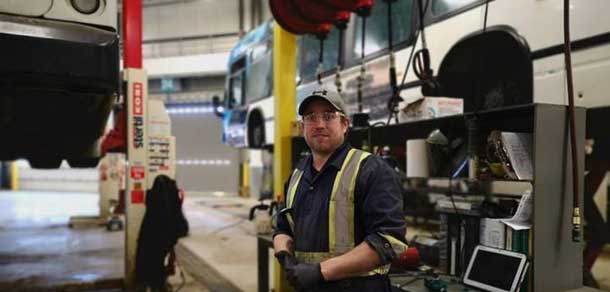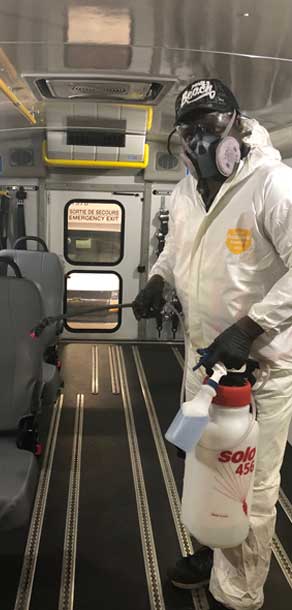The Professional Edge spoke with Jeff Jorgenson, P.Eng., City Manager with the City of Saskatoon, to learn what changes have been implemented during COVID-19.
Jeff Jorgenson, P.Eng.
What effect has COVID-19 had on the City of Saskatoon?
As an employer, it involved directing everybody who could work meaningfully from home to do so, as well as introducing new safety protocols, shift changes or different work hours for core services staff who still needed to be out in the field.
Thanks to these efforts, we have played an important part as leaders in our community in helping to reduce the spread of COVID-19.
The COVID-19 pandemic has really challenged us to rethink the way we see our business. How we deliver our work has changed for every single one of us.
Although it has been hard to adjust to new ways of working, I’ve never been so proud of the way City of Saskatoon employees have responded to this unprecedented situation.
In the long run, I believe our organization will be much stronger and more resilient. We’ve learned a lot and as a result, we are now better equipped to deal with crises in the future.
How has COVID-19 affected the way you do business?
Due to physical distancing requirements, we had to move a large portion of staff to working from home in record time. This would have been unthinkable earlier this year and we did not have a strong work-from-home strategy in place at the time.
From a technology point of view, we were in a good position from having recently implemented Office 365. So, we were able to leverage these best practices, collaborative technologies and tools during the pandemic. The big challenge was the speed at which it needed to happen. Our Information Technology division really rose to the challenge to make that a reality.
While technology was one challenge, another was facing a steep learning curve for staff, including me, to quickly understand how to use these new methods where they previously hadn’t been a part of our day-to-day work.
We conducted our first news conference on Zoom and had it live-streamed to Facebook. We held our first city council meeting on Zoom, while many internal meetings moved to Microsoft Teams. There were a few bumps here and there, but we made it work, just like everyone else.
Regarding maintaining core services:
Much of our core work cannot be carried out by employees working from home. One example is we rely on mechanics to keep vehicles going for water and sewer repair crews. A mechanic can’t fix a vehicle from home.
Services such as water, waste, light, power, transportation, fire services, roadways and construction are carried out by staff who still need to report to worksites and be out in the field. These services are essential to the lives of Saskatoon residents and keeping the city moving.
What challenges have you been facing?
We must continually reassess the way we deliver services to the public in order to keep staff safe when they are out in the community.
Having to implement increased safety protocols in a rapidly changing situation, communicating important information to managers and supervisors across the corporation was critical. Early on we established a COVID-19 communication framework to make sure information was streamlined and easy to find.
We also had to provide guidance to staff about health and safety considerations for staff working from home.
We needed to be very clear about our expectations for employees when working from home – the need for occupational health and safety requirements that still needed to be followed in order to minimize risks to employees while they work from home, as well as the importance of being aware of support and resources available for mental health and well-being of employees.
In relation to managing the fiscal impact:
With all the changes we’ve faced to help slow the spread, it’s no surprise the COVID-19 pandemic has had a profound effect on the city’s finances. To help manage these impacts in a balanced and sustainable way, we developed a comprehensive strategy to mitigate these impacts.
The strategy included a balance of maintaining civic services, reducing expenditures, utilizing fiscal stabilization reserves and continuing to work with other orders of government on solutions.
How have operational changes in your organization impacted the public?
The city is doing its part to flatten the curve of COVID-19 cases in Saskatoon. We have made many staffing and service changes so our employees can safely deliver services to residents and make sure people remain physically apart from one another. This way we can all work together by staying apart – it will protect the health of essential frontline health care staff, core service workers and first-responders. These actions in turn protect all of us.
As a municipality, we also needed to think about the long-term impacts and be financially responsible. We felt this was particularly important with so many people and businesses hurting or directly affected. Our approach was to continue to develop strategies to keep as much of our work and responsibilities going as we possibly could.
“We needed to do what we could to keep Saskatoon businesses and our economy going in the short-term and to position us for when we start returning to a more normal operating environment, we’re as far ahead as we can possibly be”.
Prior to COVID-19, did you have a plan to deal with a pandemic?
A. The City of Saskatoon has an overall Emergency Management Plan and there is a sub-section of this plan that is for public health emergency or pandemic plan. This plan was originally developed in 2006 and updated in 2009 during the H1N1 pandemic.
What was your plan and has it worked as you expected?
Our plan focused on maintaining our core services and the health, safety and well-being of all our employees and residents of Saskatoon. It was developed in partnership with our local health authority and other critical infrastructure partners.
Pandemic response planning typically focuses on ensuring critical services can continue based on the number of staff who are directly impacted or diagnosed with the pandemic disease.
In this case, many more of our staff were impacted by closure of schools, limits on the number of children who could be in day-care settings, required self-isolation after travel and the impact on our operations of the recommendations related to physical distancing.
In this pandemic response, more than any other emergency response the City has been involved with, the interdependencies between our internal divisions and our external partners were highlighted.
The City of Saskatoon has strong partnerships with many sectors and these partnerships were essential for a coordinated, collaborative and compassionate response.
What have you needed to change/develop on the fly?
A.There were many adjustments that we had to make quickly and efficiently during the initial impact of COVID-19 on our city. This included working from home, ensuring physical distancing in work locations and adjustment to schedules and work plans.
This would not have been possible without a whole city response plan. Every division in our organization and every employee played an essential role in this response.
No matter what needed to be changed or what new measures implemented our team developed processes, communication plans and a change management strategy to do our best to ensure alignment in an ever-changing environment.
Everyone in our organization adjusted to constant and continual change in the first several weeks of the response.
While our pandemic plan held some of the basic strategies and responses that were implemented it did not consider a highly mobile and closely interdependent society. Our original plan did not contemplate the way the health orders around social distancing were instituted.
In addition, the strain on the supply chain for COVID-19 related safety was underestimated. This required a nimble, responsive and focused approach that considered all current supply chains while continually exploring new options and partnerships.


